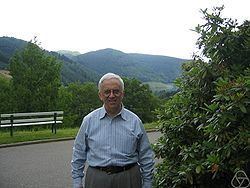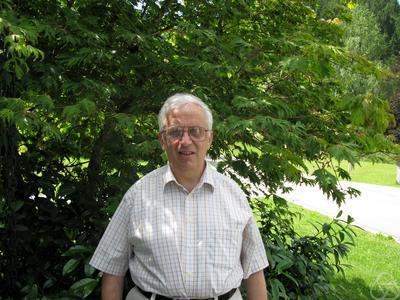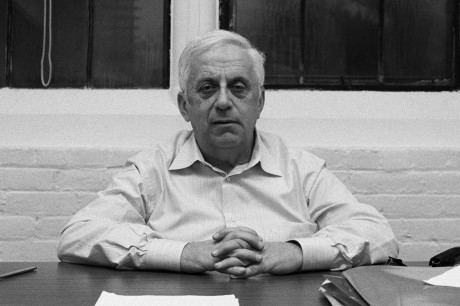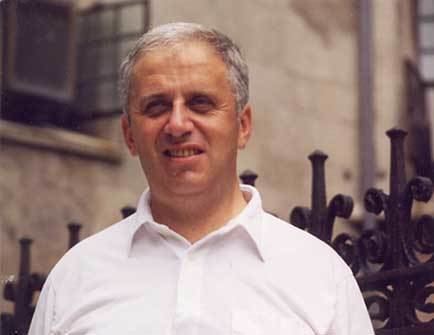Nationality Russian Fields Mathematics | Name Grigory Margulis Role Mathematician | |
 | ||
Doctoral students Emmanuel BreuillardHee Oh Known for Diophantine approximationLie groupsSuperrigidity theoremArithmeticity theoremExpander graphsOppenheim conjecture Books Discrete Subgroups of Semisimple Lie Groups Similar People | ||
Gregori Aleksandrovich Margulis (Russian: Григо́рий Алекса́ндрович Маргу́лис, first name often given as Gregory, Grigori or Grigory; born February 24, 1946) is a Russian-American mathematician known for his work on lattices in Lie groups, and the introduction of methods from ergodic theory into diophantine approximation. He was awarded a Fields Medal in 1978 and a Wolf Prize in Mathematics in 2005, becoming the seventh mathematician to receive both prizes. In 1991, he joined the faculty of Yale University, where he is currently the Erastus L. De Forest Professor of Mathematics.
Contents

Biography

Margulis was born in Moscow, Soviet Union. He received his PhD in 1970 from the Moscow State University, starting research in ergodic theory under the supervision of Yakov Sinai. Early work with David Kazhdan produced the Kazhdan–Margulis theorem, a basic result on discrete groups. His superrigidity theorem from 1975 clarified an area of classical conjectures about the characterisation of arithmetic groups amongst lattices in Lie groups.

He was awarded the Fields Medal in 1978, but was not permitted to travel to Helsinki to accept it in person. His position improved, and in 1979 he visited Bonn, and was later able to travel freely, though he still worked in the Institute of Problems of Information Transmission, a research institute rather than a university. In 1991, Margulis accepted a professorial position at Yale University.

Margulis was elected a member of the U.S. National Academy of Sciences in 2001. In 2012 he became a fellow of the American Mathematical Society.
In 2005, Margulis received the Wolf Prize for his contributions to theory of lattices and applications to ergodic theory, representation theory, number theory, combinatorics, and measure theory.
Mathematical contributions
Margulis's early work dealt with Kazhdan's property (T) and the questions of rigidity and arithmeticity of lattices in semisimple algebraic groups of higher rank over a local field. It had been known since the 1950s (Borel, Harish-Chandra) that a certain simple-minded way of constructing subgroups of semisimple Lie groups produces examples of lattices, called arithmetic lattices. It is analogous to considering the subgroup SL(n,Z) of the real special linear group SL(n,R) that consists of matrices with integer entries. Margulis proved that under suitable assumptions on G (no compact factors and split rank greater or equal than two), any (irreducible) lattice Γ in it is arithmetic, i.e. can be obtained in this way. Thus Γ is commensurable with the subgroup G(Z) of G, i.e. they agree on subgroups of finite index in both. Unlike general lattices, which are defined by their properties, arithmetic lattices are defined by a construction. Therefore, these results of Margulis pave a way for classification of lattices. Arithmeticity turned out to be closely related to another remarkable property of lattices discovered by Margulis. Superrigidity for a lattice Γ in G roughly means that any homomorphism of Γ into the group of real invertible n × n matrices extends to the whole G. The name derives from the following variant:
If G and G' are semisimple algebraic groups over a local field without compact factors and whose split rank is at least two and Γ and Γ(The case when f is an isomorphism is known as the strong rigidity.) While certain rigidity phenomena had already been known, the approach of Margulis was at the same time novel, powerful, and very elegant.
Margulis solved the Banach–Ruziewicz problem that asks whether the Lebesgue measure is the only normalized rotationally invariant finitely additive measure on the n-dimensional sphere. The affirmative solution for n ≥ 4, which was also independently and almost simultaneously obtained by Dennis Sullivan, follows from a construction of a certain dense subgroup of the orthogonal group that has property (T).
Margulis gave the first construction of expander graphs, which was later generalized in the theory of Ramanujan graphs.
In 1986, Margulis gave a complete resolution of the Oppenheim conjecture on quadratic forms and diophantine approximation. This was a question that had been open for half a century, on which considerable progress had been made by the Hardy–Littlewood circle method; but to reduce the number of variables to the point of getting the best-possible results, the more structural methods from group theory proved decisive. He has formulated a further program of research in the same direction, that includes the Littlewood conjecture.
